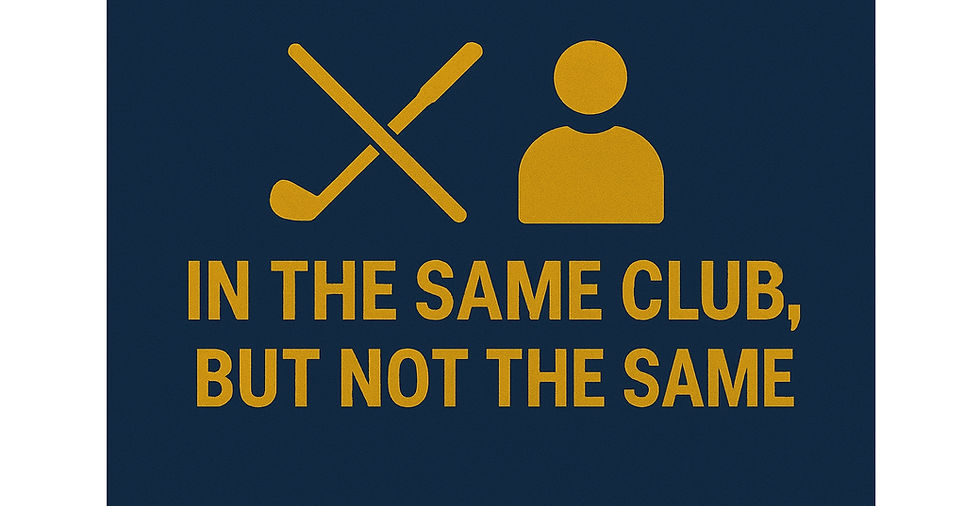Xi and Putin Are in the Same Club, but Are Not the Same, Because China and Russia Are Not the Same
- john raymond
- Jul 26
- 3 min read

Xi Jinping and Vladimir Putin are often grouped together in Western discourse—as strongman autocrats who oppose democracy, disrupt global norms, and threaten international stability. This framing is not entirely wrong. Both are deeply committed to regime survival at all costs, both rely on asymmetric strategies to subvert Western power, and both are actively working to undermine the liberal international order.
But the assumption that they are interchangeable is mistaken. Xi and Putin are in the same club, but they are not the same—because the systems they govern are fundamentally different. And those structural differences dictate how they wield power, manage crises, and project power.
Putin’s regime depends on perpetual external confrontation. His legitimacy is built on the narrative of a besieged Russia defending itself against Western aggression. War—real, kinetic, and unrelenting—is not a choice but a necessity.
Whether in Georgia, Crimea, Syria, or Ukraine, Putin must always be pushing outward, confronting neighbors, and keeping his population in a constant state of siege readiness. Russia’s political economy can absorb this posture: it is autarkic, built on resource extraction, with limited dependence on global markets or Western investment. Putin’s elite class is trapped, his public is propagandized and impoverished, and there are no alternative centers of power.
Xi’s China is different. While also autocratic, China is still deeply entangled in the global economy. Its growth has depended on exports, foreign capital, and global trade infrastructure that it cannot afford to lose. Its military has not fought a war since 1979. Its rising urban middle class is materially aspirational, not ideologically militant. The Chinese Communist Party (CCP) is not a monolith like Putin’s Kremlin—it is a complex, bureaucratic ecosystem with competing interests across regions, institutions, and factions.
These internal dynamics mean that Xi cannot simply order a war without risking elite backlash, economic collapse, or social instability. As a result, Xi governs not through war but through performance—carefully staged displays of military preparation, rhetorical escalation, and nationalist myth-making.
At the heart of this theater is Taiwan. For Xi, Taiwan is not just a territorial goal—it is a political instrument. Its defiance allows him to frame China’s “rejuvenation” as an unfinished mission. Taiwan’s democratic success challenges the CCP’s ideological monopoly, and its continued independence justifies surveillance, censorship, and militarization at home.
But the genius—and the danger—of Xi’s posture is that he does not need to actually take Taiwan to benefit from it. He needs only to appear to be preparing for its inevitable conquest. This is how Xi maintains control: through the illusion of action, not action itself.
Invasion, by contrast, would be catastrophic. A failed attempt could collapse the PLA’s untested command structure and shatter the regime’s myth of competence. Even a “successful” invasion would likely trigger U.S. military involvement, collapse China’s trade relationships with the West, and force the Party to govern a hostile population of 24 million under economic siege. The risks vastly outweigh the gains.
But Xi cannot walk away from the Taiwan narrative either, because it now underpins his personal legitimacy. This creates a structural trap: Xi must point to the island, rehearse its seizure, purge generals who aren’t loyal enough, and rally the nation around its inevitable return—without ever pulling the trigger.
This is where Xi and Putin diverge most starkly. Putin needs real war to survive. Xi needs the permanent threat of war to do the same. Putin is the warrior king whose crown is kept intact through blood. Xi is the stage manager of destiny, whose empire survives on choreography and suspense. Both are dangerous, but they are dangerous in different ways—and therefore must be countered differently.
Understanding this distinction matters. Western policymakers who read too much into PLA ship counts or drills may miss the deeper logic of Xi’s strategy: that the threat is meant to be enduring, not eruptive. That inaction, when paired with the performance of inevitability, is the safest path to regime security. Xi may one day invade Taiwan, but only if he concludes that his power is slipping and that only decisive risk can save him. Until then, he will continue to escalate in image, not in substance—because the myth of unification is more useful than the act itself.
Putin pushes because stasis is death. Xi points because movement is risk. Both autocrats want the same goal—unaccountable power preserved indefinitely—but they follow different scripts.
If we fail to understand those scripts, we may respond to Chinese and Russian actions as though it were the same. And the two most certainly are not.






Comments